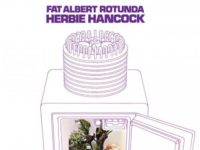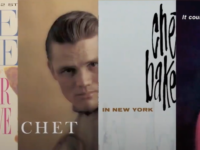Since 2019, Blue Note Records has been engaged in one of the most ambitious and successful jazz reissue campaigns in its 80-plus year history. It wouldn’t be a stretch to say it’s one of the most ambitious and successful in all of jazz history.
The company began with the Tone Poet Audiophile Vinyl Reissue Series, featuring albums that were often from the more obscure side of the label’s history. Some were not released when they were first recorded, while others were only issued on compact disc or only distributed in Japan. Some had earlier fetched huge sums on the collectors market for original pressings, if they ever existed.
All of them were of the highest quality, featuring mastering by Kevin Gray at Cohearent Audio, and were manufactured on 180-gram vinyl at Optimal in Germany. They typically included gatefold jackets with rare photos, as well – and with a very affordable list price of around $35. Forty-seven reissues have already arrived, as of this writing.
The next series, celebrating the 80th anniversary of the company, was the Blue Note 80 Vinyl Reissue Series. While the albums did not feature gatefold packaging, they were drawn from less obscure titles in some cases. These reissues were list priced at $26, but new copies could be purchased at well under $20. They were also mastered by Gray at Cohearent Audio and pressed on 180-gram vinyl. Thirty-seven reissues have followed, as of this writing.
The newest Blue Note reissue series is the Classic Vinyl Reissue Series, launched in 2020. These are also mastered by Kevin Gray and manufactured at Optimal on 180-gram vinyl, but they usually do not include gatefold packaging. The albums in this series are from the Blue Note jazz album releases that most jazz fans have come to know and love, and would be considered in most cases the label’s best-known catalog releases. These LPs are listed at $26; 16 reissues have been released, as of this writing.
Two recent Classic Vinyl releases represent two very distinct sides of the classic Blue Note period: One is Herbie Hancock’s Maiden Voyage, a very accessible jazz project that crossed over in the latter 1960s and ’70s, receiving considerable progressive FM radio airplay. Hancock’s fifth solo studio effort is arguably one of the best jazz albums of the ’60s. The other album, Eric Dolphy’s Out to Lunch, showcases the more esoteric, avant-garde side of Blue Note jazz. Both albums were recorded by Rudy Van Gelder.
Maiden Voyage features the then-24-year-old Herbie Hancock on piano, Freddie Hubbard on trumpet, George Coleman on tenor sax, Ron Carter on bass and Anthony Williams on drums. Hancock, Carter and Williams played in what was known as the Second Great Miles Davis Quintet from 1964-68, as Davis embraced bold new directions in jazz. In some instances, they laid the groundwork for fusion jazz, while setting a template for the direction Hancock and Williams would go after their time with Davis. Williams would ultimately appear on nearly 20 Davis albums and on 15 Hancock projects.
Somewhat of a concept album revolving around water, Maiden Voyage predates the progressive motif that would permeate the rock world beginning in only three short years. The album has a lilting beauty and a searching experimentation that are neither too simple nor over the top. The title track is wholly original and pointed to a new approach to jazz, all while being very accessible – something Hancock would do time and time again in his career.
Maiden Voyage is probably Herbie Hancock’s most honored and enduring work, and he would come back to these compositions again and again, reimagining them for new generations and with new collaborators. The album is a must-have for any serious jazz listener’s library. Given the affordable price, superb sound and pressing quality that could probably only be superseded by a mint original pressing, it’s recommended that you get this one soon if you don’t already own Maiden Voyage on vinyl.
Out to Lunch features Eric Dolphy on alto sax, flute and bass clarinet in his only Blue Note album as a leader, Bobby Hutcherson on vibes, Richard Davis on bass – and, as with Herbie Hancock’s Maiden Voyage, Freddie Hubbard on trumpet and Anthony Williams on drums.
Out to Lunch arrived the same year Dolphy suddenly died at age 36 in Berlin. He was scheduled to perform when he apparently succumbed after going into a diabetic coma. Eric Dolphy made just seven albums during his short lifetime, although dozens of posthumous projects have since followed this one. His legacy is rounded out by extensive work as a sideman, with notable credits on albums from John Coltrane, Ornette Coleman and Charles Mingus. (In fact, both Dolphy and Hubbard are featured on Coleman’s groundbreaking Free Jazz album in 1961.)
Two of the tracks on Out to Lunch are outright homages to other musicians: “Hat and Beard” was inspired by Charles Mingus, while “Gazzelloni” is named after the Italian classical jazz flautist Severino Gazzelloni. They’re part of an album that boasts a freedom matched only by its rhythmic innovations. Rarely do the players take pat solos; instead they seem to be soloing at will and often simultaneously.
In many ways, the results work as a natural follow-up to an earlier Ornette Coleman album, 1959’s classic The Shape of Jazz to Come. While certainly not an album for the casual jazz fan, Eric Dolphy’s Out to Lunch is a cornerstone release of the avant-jazz/free-jazz canon and in retrospect quite listenable in light of others who took the genre in even more experimental, cosmic and cacophonous directions.
These Blue Note jazz reissues are a feast for audiophiles and serious jazz fans, boasting both superior packaging (especially the Tone Poet series) and sound quality. Quite a few of the reissues from all three series are out of print, but are supposed to return to wide availability. Until then, collectors are advised to buy titles they want upon release to ensure getting one in a timely manner – or at all.




